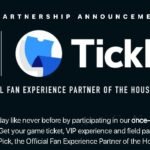Even as AM/FM holds a commanding lead in the ad-supported audio spotlight, audience habits continue to evolve, as exemplified by a small shuffle of listening share in the first quarter of 2025 between radio and podcasting.
According to The Record Q1 2025 analysis from Nielsen and Edison Research, radio and podcasting traded just a single percentage point of time spent with ad-supported audio among adults 18 and older from last quarter, as radio slipped slightly to 66%, while podcasts stepped up to 19%.
Across all platforms, whether subscription-based or free, US adults listened to an average of 3 hours and 45 minutes of audio per day during the first quarter. Ad-supported content made up 64% of that total.
Age is a major variable in how audiences consume audio. Among adults 35 and older, radio was the primary source of ad-supported listening, taking 73% of the total share. Podcasts accounted for just 15% and streaming audio 9%. In contrast, listeners aged 18–34 distributed their time more evenly across platforms: radio captured 47%, while podcasts surged to 32%, and streaming services made up 20%. Satellite radio accounted for only 1% in this younger group.
The data also revealed striking generational divides in streaming habits and format preferences across AM/FM.
News/Talk radio held the largest share of total AM/FM station streaming in Q1 across all demos, accounting for a commanding 23.2% of streaming among adults. This disproportionate dominance is particularly pronounced among listeners 35 and older, where News/Talk captures 25.4% of all AM/FM streaming, nearly three times the next most-streamed format.
Among younger listeners aged 18–34, however, the picture shifts. While News/Talk still claims a surprising 9.3% of streaming within this group, ranking fourth overall, it trails behind Adult Contemporary (14.4%), Pop CHR (8.7%), and Alternative (6.8%). Notably, All Sports surged to 9.8% among this cohort, nearly tripling its share of total listening for the same group (3.5%), suggesting sports talk has carved out a strong niche in digital-first environments.











